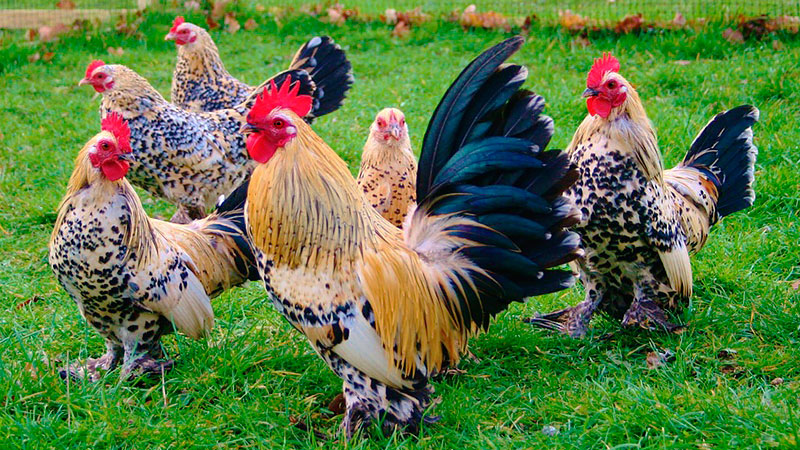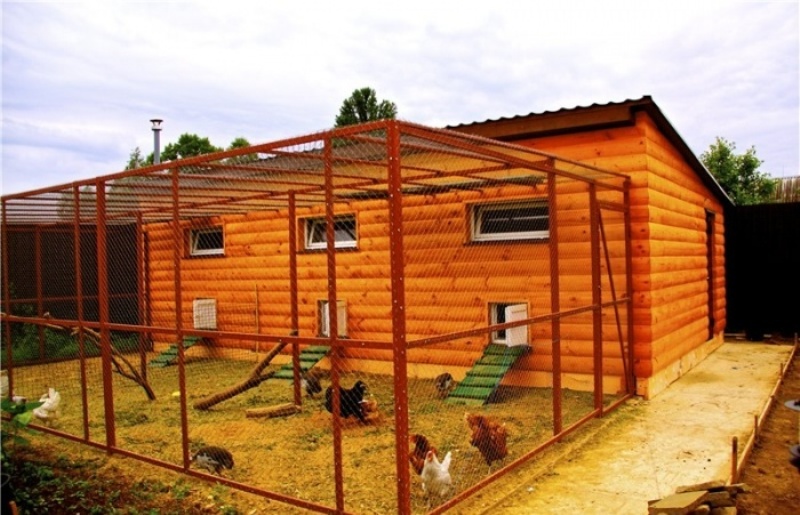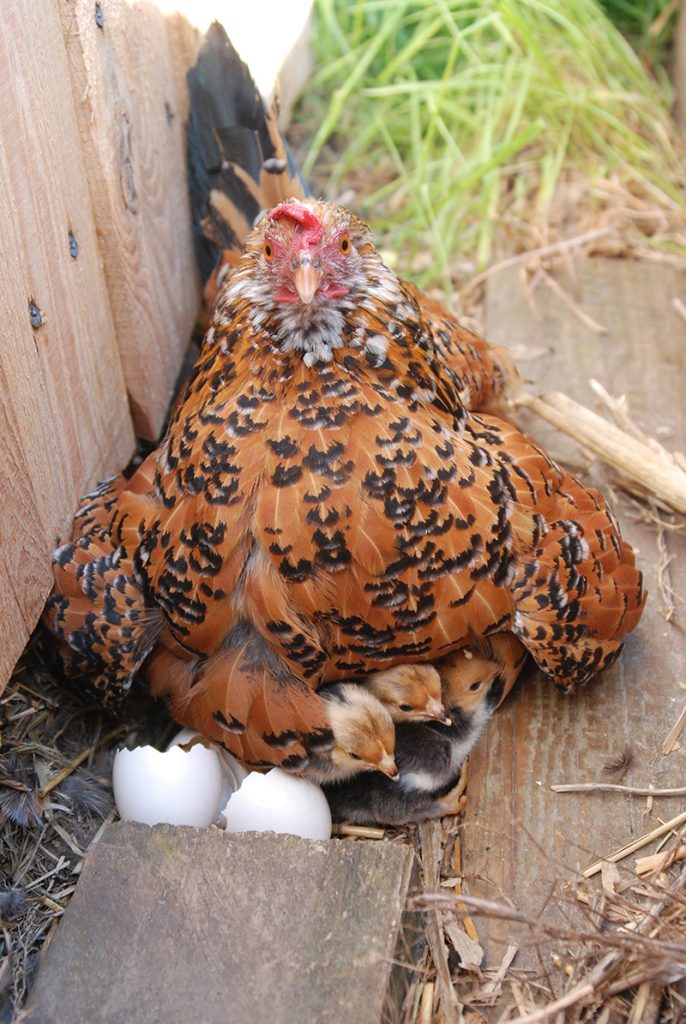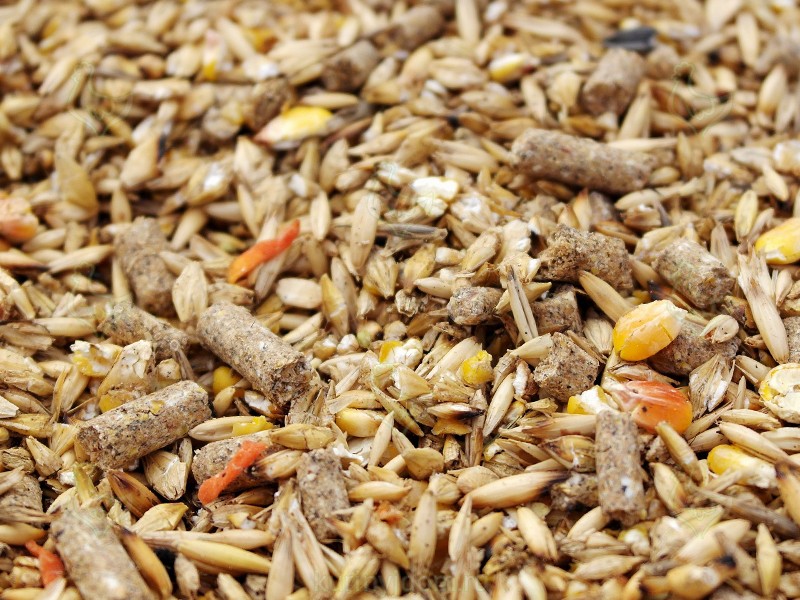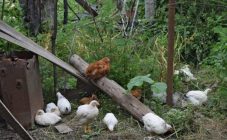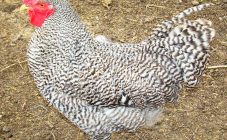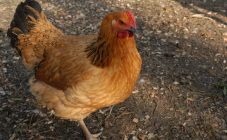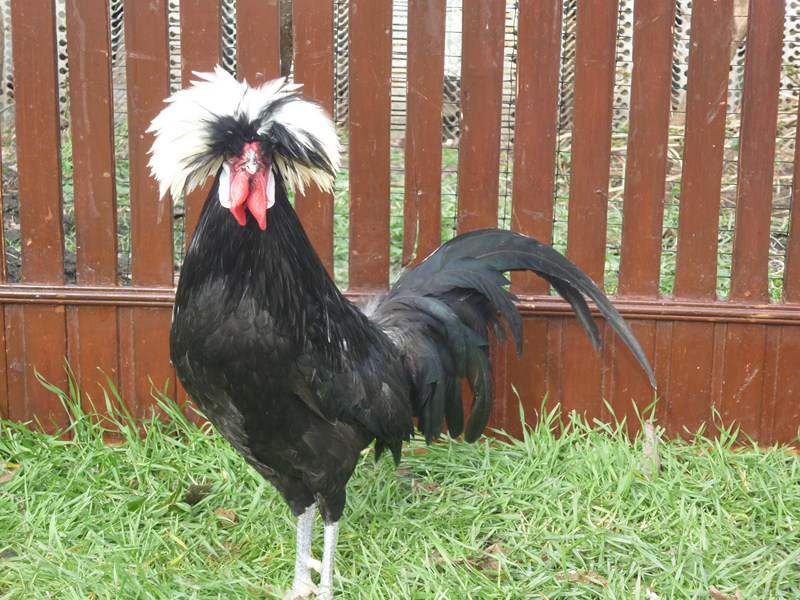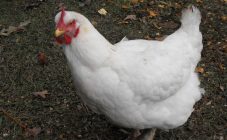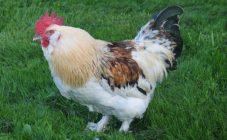Bentams are bright, energetic, sociable and at the same time warlike inhabitants of the poultry house. There are two completely opposite hypotheses of the origin of this breed. The first presupposes the emergence of Bentamok chickens as a result of gradual selection - the selection of the smallest individuals from each offspring, which ultimately led to the production of a dwarf breed. The second - considers Bantamok to be a separate, independent family, taking roots from ancient times - this explains their strong immunity and maternal instinct, which they inherited from their wild progenitors.
According to some reports, Bentamki chickens are from ancient India, where they were bred for decorative purposes and participation in fights. In the future, chickens go to Japan, where they are used in noble houses as an indicator of wealth. Then dwarf chickens, thanks to travelers, find themselves in Europe. In Russia, the first mention of Bentamki dates back to 1774 (Ptichiy Yard management). There is evidence that Bentamki are depicted on the tombs of Lycia, dating back to the 7th century BC.
Description of the breed
The Bentamok breed includes many varieties, each of which has its own distinctive characteristics, but some characteristics they share. Since this is a type of dwarf chickens, then they have appropriate sizes. Bentams combine many decorative breeds: Bentam Padua, Hamburg Black, Holland, Sibrayt, Altai, Phoenix, Bentamka Calico, Orekhovaya, Pekinskaya, Boytsovskaya, Malaysian Serama. In Russia, the most widespread are Orekhovaya and Chintsevaya.
Bentamka chicken breed description:
- adult weight: chicken - 0.5-0.7 kg, rooster - up to 1 kg;
- skin of white, light yellow, yellow;
- the head is small in size, with a small beak;
- the crest is small, leaf-shaped or rosy, pink in color;
- plumage abundant, dense, bright;
- the wings are large, slightly lowered (flywheels, steering);
- low, vertical body fit;
- tail slightly raised;
- feathery, short legs, naked or with plumage;
Maintenance and care
For the most part, Bentamka chickens are easy to care for and breed, practically do not suffer from diseases, with the exception of some varieties.
They contain chickens in a spacious aviary, ideally - on the half of which there should be a lawn with tasty grass, and the second part is covered with a thick layer of sand. It is imperative to have free range, where birds will be able to forage for themselves and catch small insects. Chickens fly well, so the aviary should be closed.
The poultry house is equipped with low perches and nests (due to the small parameters of chickens). Be sure to arrange a bathhouse - a container filled with sand or ash, which will not only give the chickens pleasure, but will also become a prophylactic agent against feather parasites.
In winter, chickens are kept in a warm chicken coop, heating is not necessary, since many breeds can easily tolerate low temperatures, but insulation of walls and floors will not be superfluous; a layer of thick, dry litter is suitable for the floor.Subzero temperatures in the hen house have a negative effect on egg production.
The drinker and trough are kept clean. Disinfection of the entire room is required periodically. Small shells and pebbles are freely available to chickens.
The diet
Chickens eat little, they are completely unpretentious in choosing. Basic diet: compound feed, fresh herbs, vegetables, vitamin supplements, cottage cheese. Feeding three times a day, clean and fresh water should be constantly. Use only high-quality feed rich in animal and vegetable proteins. It is necessary to periodically add bone, fish meal, chalk and mealworms to the menu.
Breeding
These birds make excellent brooders. In addition to their eggs, they easily hatch eggs of larger breeds. Bantams can lay eggs in secret places and sit on them; it is not so easy to find such a hidden clutch in a spacious poultry yard. Chickens hatch a day earlier than ordinary chickens, that is, 20 days. The hen takes care of them for 1-3 months, then starts to lay again. In the nest, a Bentamka chicken can sit for up to 10 weeks. The family should be collected from 1 rooster and 3-7 hens.
The luggage formed by the chicken can consist of a large number of eggs, which is extremely bad - the heat will not be distributed correctly, eventually leading to the death of most of the embryos. The optimal amount is 10-11 eggs. The survival rate of young animals is good, at least 93%.
Chickens very carefully monitor their offspring, constantly monitor, protect from predators (cats, kites), in bad weather they carefully cover with their bodies, teach them how to get pasture on their own.
The first nutrition of the chicks is chopped eggs and cottage cheese, millet is gradually added, and then wheat. The chicken is gaining weight very quickly.
Advantages and disadvantages
These dwarf chickens have a lot of positive sides, but there are practically no shortcomings.
Benefits:
- beautiful appearance;
- highly developed maternal instinct;
- low consumption of feed;
- excellent immunity;
- easy adaptation to new conditions;
- live long enough - with proper care up to 10 years;
- high egg production rates for decorative breeds.
The disadvantage is the difficulty of obtaining real breed Bantamoks (both eggs and individuals).
Undoubtedly, Bentamki are an interesting and desirable object for keeping in a poultry house: they are unpretentious, easily reproduce, and they eat little at the same time - just a dream of poultry farmers.
